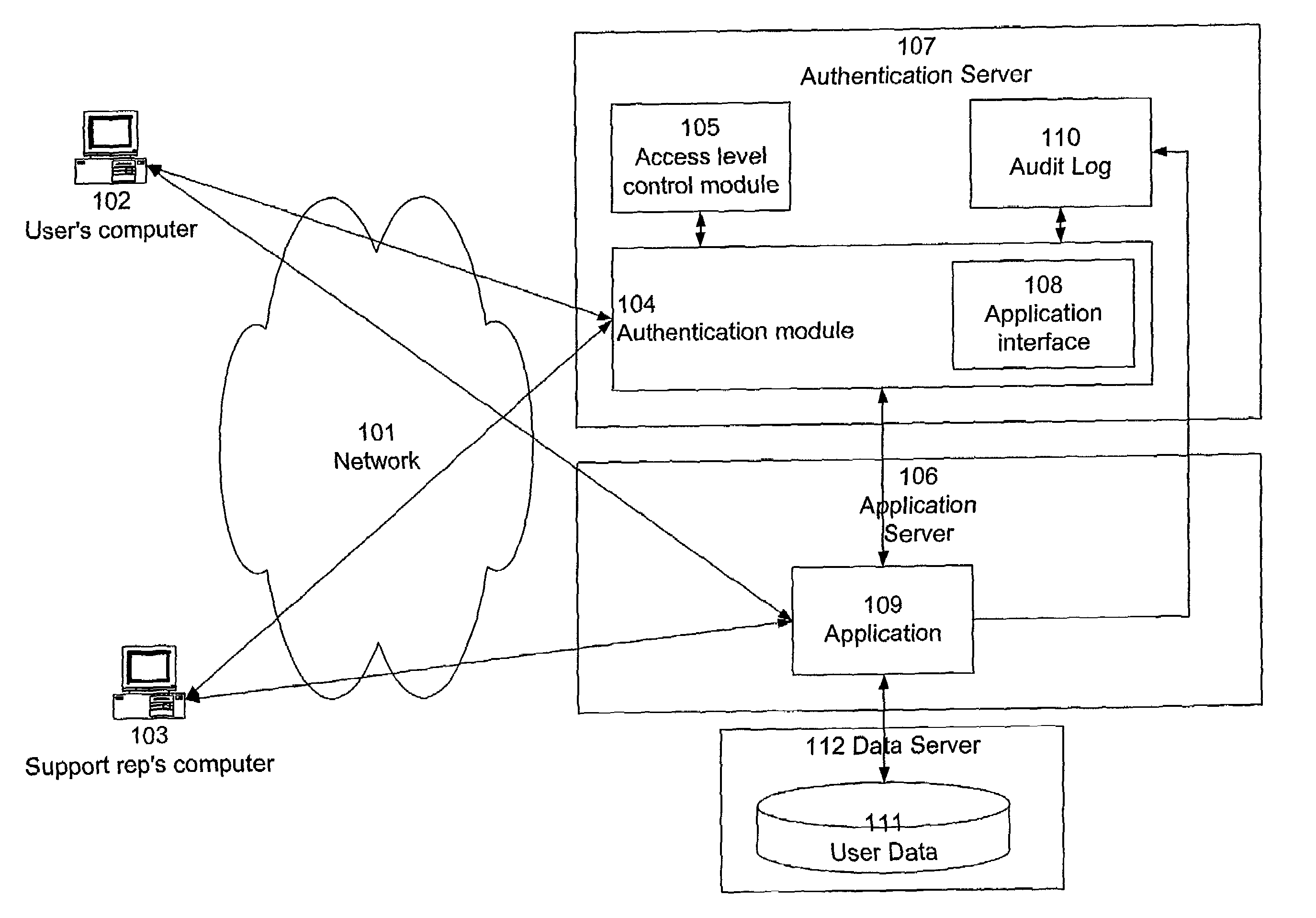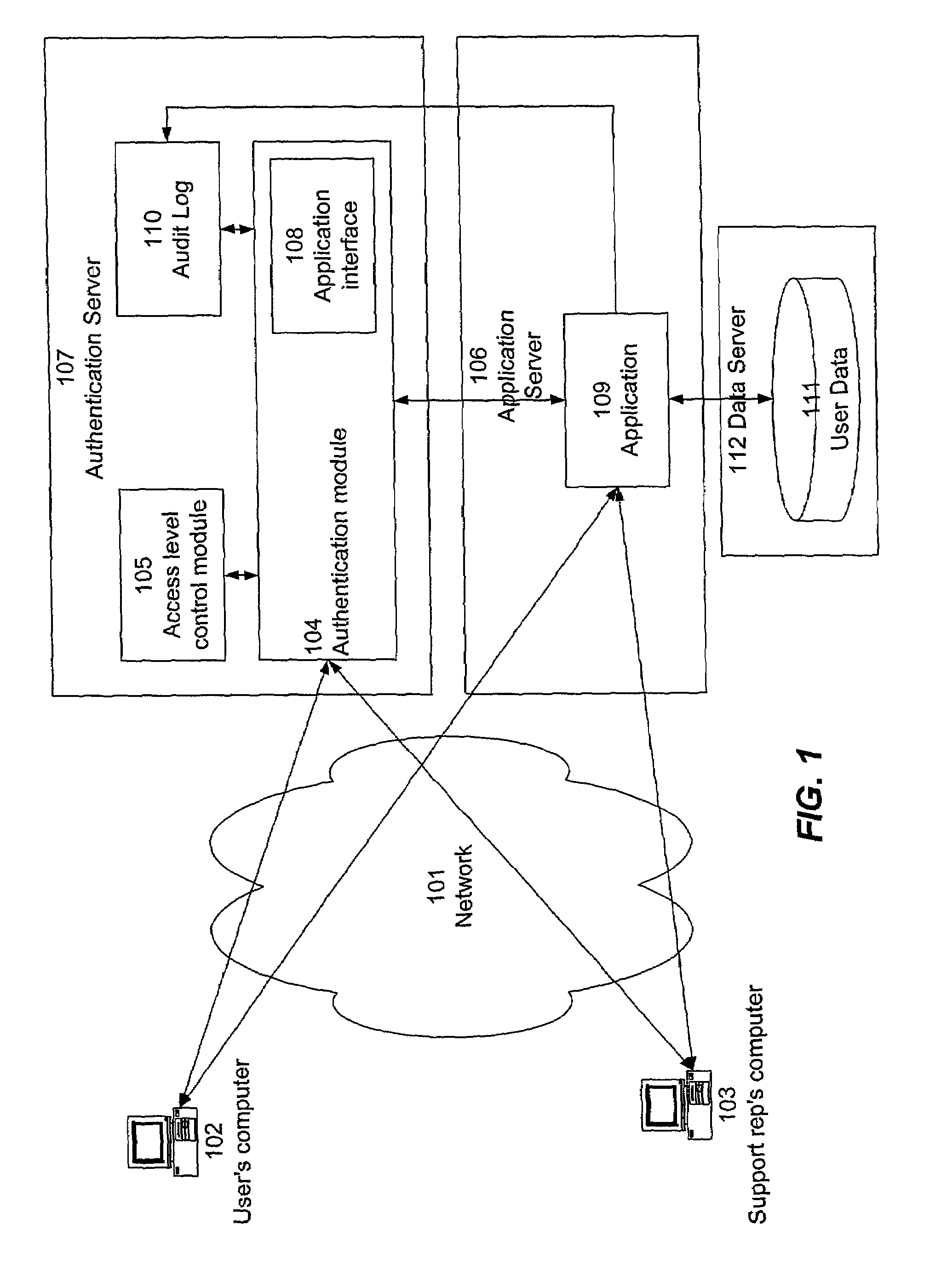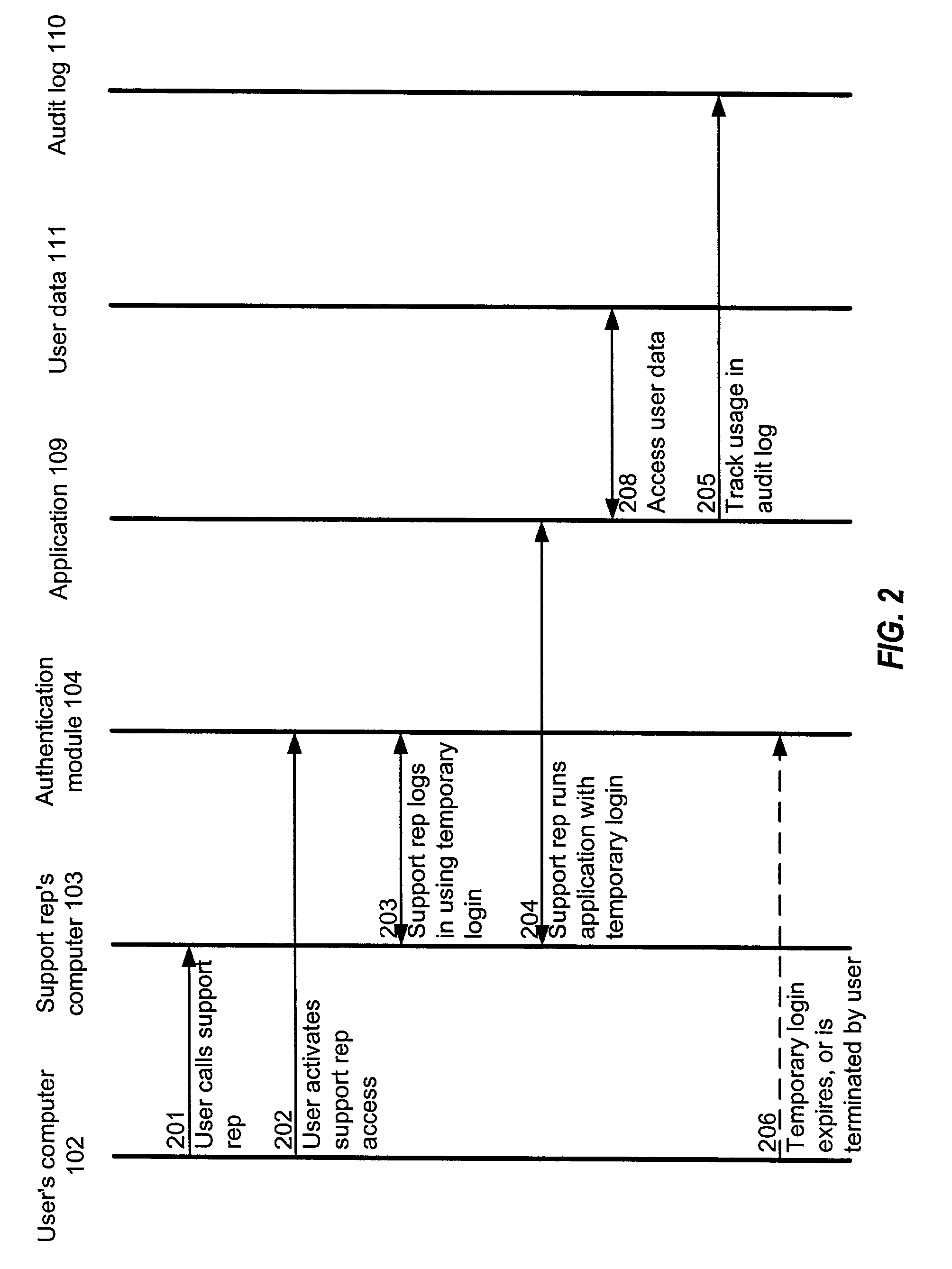Identification and authentication management
a technology of identity management and authentication, applied in the field of identity and authentication in computer systems, can solve the problems of relinquishing control over data, exposing data to various security risks, and difficult reproducing user problems, etc., and achieve the effect of diagnosing and resolving
- Summary
- Abstract
- Description
- Claims
- Application Information
AI Technical Summary
Benefits of technology
Problems solved by technology
Method used
Image
Examples
Embodiment Construction
[0023]Referring now to FIG. 1, there is shown an example of a system for practicing the present invention according to one embodiment. In the example of FIG. 1, the invention is implemented in a network environment, as a mechanism for providing a support representative (“support rep”) with limited access to a user's data for diagnostic purposes.
[0024]User's computer 102 is a conventional computer, such as a personal computer running an operating system and one or more software applications. The operating system may be, for example, Microsoft Windows™, available from Microsoft Corporation of Redmond, Wash., or it can be any other operating system as is known in the art. Software applications may include conventional client-based desktop applications, as well as network-based applications having a client component and a server component. Computer 102 is connected to network 101, such as the Internet, using well-known network connection schemes. For example, computer 102 may be connect...
PUM
 Login to View More
Login to View More Abstract
Description
Claims
Application Information
 Login to View More
Login to View More - R&D
- Intellectual Property
- Life Sciences
- Materials
- Tech Scout
- Unparalleled Data Quality
- Higher Quality Content
- 60% Fewer Hallucinations
Browse by: Latest US Patents, China's latest patents, Technical Efficacy Thesaurus, Application Domain, Technology Topic, Popular Technical Reports.
© 2025 PatSnap. All rights reserved.Legal|Privacy policy|Modern Slavery Act Transparency Statement|Sitemap|About US| Contact US: help@patsnap.com



